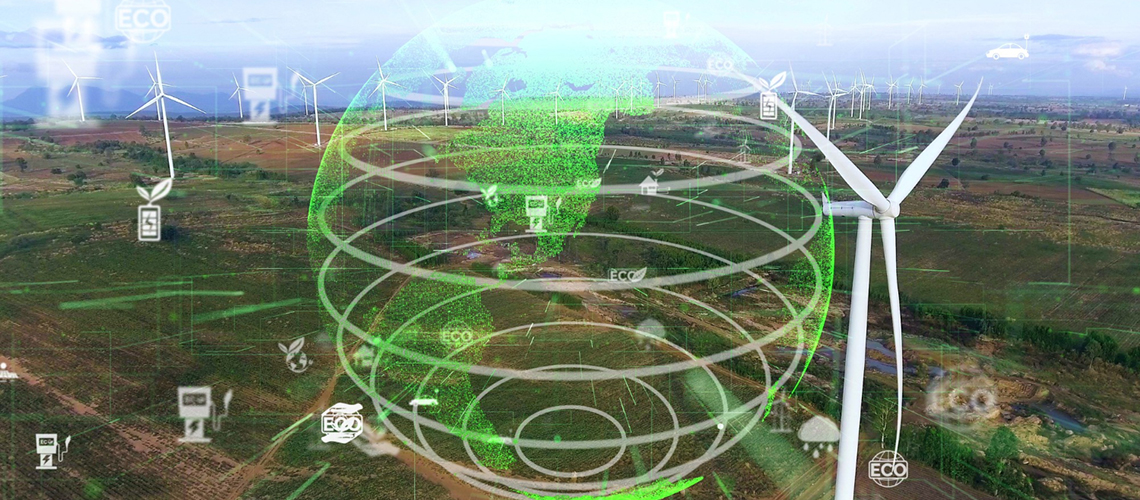The Future is Green: Key Renewable Energy Trends for 2025

Once upon a time, power just came from a plug. Now, it’s coming from the sun, the wind, and soon, from hydrogen too. As conversations shift from coal to clean and from grid dependence to smart solutions, India is finding itself right at the centre of a global energy evolution.
With India committing to net-zero emissions by 2070 and aiming for 500 GW of non-fossil fuel capacity by 2030, the green energy movement is as ambitious as it is necessary. From green solar energy in India taking over rooftops and farmlands to advanced battery storage making wind and solar more reliable, we’re stepping into a future where power cuts and pollution could genuinely become things of the past.
And Jindal India Renewable Energy Limited (JIRE) is helping shape this green tomorrow by investing in cutting-edge hybrid projects and next-gen solutions like Battery Energy Storage Systems (BESS). So, what’s next? Let’s dive into the top renewable energy trends you’ll see in 2025.
1. Hybrid Renewable Projects Are the Future
Gone are the days of solar or wind working alone. In 2025, hybrid renewable energy systems (where solar and wind, and energy storage are combined) are becoming the norm. These setups ensure more stable and consistent power, even when the sun isn’t shining or the wind isn’t blowing.
A recent example? Jindal India Renewable Energy Limited was awarded the Letter of Award (LoA) from NHPC for a 300 MW solar-plus-storage project. This hybrid solution not only boosts power reliability but also showcases how Indian companies are pushing innovation to meet the country’s massive energy needs without depending on fossil fuels.
2. Green Energy Manufacture in India Is Picking Up Pace
With the global demand for renewable tech skyrocketing, green energy manufacture in India is scaling up too. We're talking solar panel production, wind turbine assembly, and BESS infrastructure–all “Made in India”. This not only reduces our reliance on imports but also supports job creation and local innovation.
Government initiatives like the Production Linked Incentive (PLI) scheme are giving a strong push to Indian manufacturers, making it easier for homegrown players to scale operations and meet the rising demand for renewable components.
3. Battery Storage Is Going Mainstream
One of the biggest limitations of solar and wind energy is their dependence on nature. That’s where battery energy storage systems (BESS) step in. In 2025, you’ll see these systems getting more affordable and widespread.
With BESS, excess power generated during the day can be stored and used when needed, like during peak demand in the evenings or cloudy days. JIRE’s move into solar-plus-storage projects is a strong indicator that battery tech is no longer optional; it’s essential for scalable renewable energy in India.
4. Corporate and Industrial Green Energy Adoption
From industrial parks in Bengaluru to textile factories in Surat, more industries are adopting renewable energy to cut costs and meet sustainability targets. Whether it’s through rooftop solar, wind power purchase agreements, or captive green energy plants, the shift is clear. Green energy makes smart business sense.
Large-scale industries are now actively exploring long-term green energy contracts to manage energy costs and reduce their carbon footprint. As the industrial sector goes green, it also contributes to improving grid stability and reducing carbon emissions nationwide.
Green Hydrogen: Fuel of the Future
While solar and wind energy have been leading the charge, 2025 is set to mark the rise of green hydrogen in India’s renewable energy landscape. So, what’s all the buzz about green hydrogen? It’s created by harnessing renewable electricity (solar or wind) to split water into hydrogen and oxygen, resulting in zero emissions and incredible potential.
With its National Green Hydrogen Mission, the GoI aims to position the country as a global leader in hydrogen production, usage, and export. Green hydrogen holds particular promise for industries like steel, fertilisers, and heavy transport, where switching to electrification isn’t always practical.
The Bottomline
As 2025 unfolds, green isn’t just a colour; it’s a direction, a strategy, and a solution. With cutting-edge technologies, policy support, and companies like Jindal India Renewable Energy Limited stepping up to lead innovation, the renewable energy landscape in India is looking brighter than ever.
Whether it’s green energy manufacture in India or advancements in green solar energy in India, the shift is clear: our future is cleaner, smarter, and more self-reliant. So, here’s to a year (and future) powered by the sun, the wind, and smart innovation.